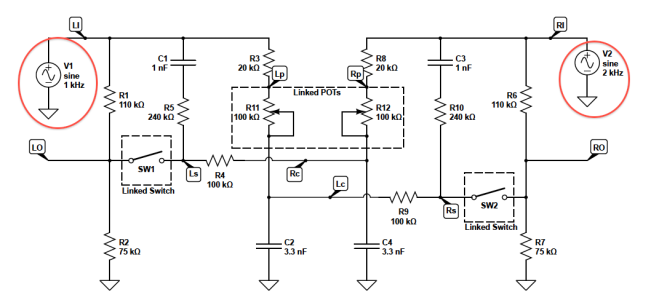rlyach said:
Thanks Paul, Now I know why I was confused. I assumed that since low frequencies are omnidirectional that delaying the high frequencies is more important. With your explanation on the psychoacoustics of the stereo image, the circuit makes perfect sense. So when they say that bass is omnidirectional, does it mean that the brain does not use loudness to locate the sound like it does with higher frequencies? It is rather convenient that delayed low frequencies make this work. Hence you can use the simple RC low pass filter.
There is a common misconception in audio circles that goes along with the phrase "bass is omnidirectional." What does that phrase really mean?
If you take it to mean, "most speakers approach omnidirectional radiation as you go lower in frequency" that's entirely correct.
But a lot of people have, without thinking it through carefully, translated it to mean, "we can't hear what direction low frequency sounds are coming from." This is not correct at all. You often see this assumption come up in discussions of single subwoofers, or the point one channel in 5.1 surround systems.
Think for a moment of hearing the sound of an airplane from a large distance. This is an example of low frequency sound without a high frequency component. The transmission loss in air has erased all high and even mid frequencies, leaving nothing but the lows. We have no difficulty locating the source of the sound.
In fact the common experience of hearing the sound emanate from a different point than the point where our eyes place the airplane is a further illustration of just how strongly we are able to localize the origination point of the sound.
It's also true that low frequency sound wraps around objects in its path, like our heads, in a different way than high frequency sound. This has many ramifications for us, but I don't think "omnidirectional" is the right word to describe this effect.
Just trying to bring some clarity.

